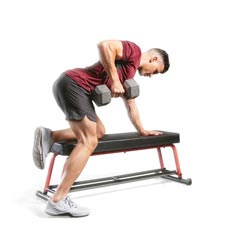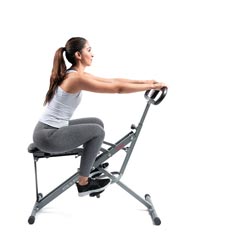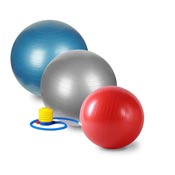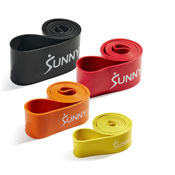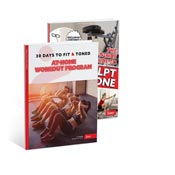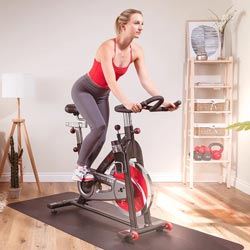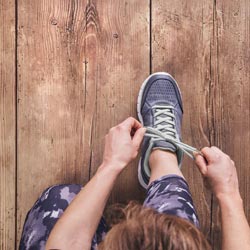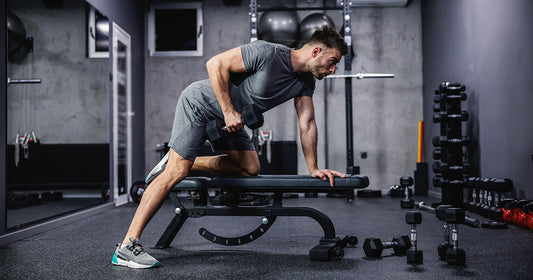More often than not, fitness goals revolve around the scale. There’s no problem with wanting to lose weight, but rapid weight loss is difficult to maintain. Plus, it often involves severe calorie restriction which can lead to both fat and muscle loss.
The problem? Muscle mass keeps your metabolism humming, so you want to keep it around. Lose it, and you can expect your metabolism to plummet—directly thwarting weight loss efforts.
Increase your muscle mass, however, and you’ll see a steady uptick in your basal metabolic rate (BMR) or your metabolism at rest(1, 2)—effectively, transforming your body into a calorie burning machine and making weight loss all the easier.
That’s the power of body recomposition, a method that involves losing fat and gaining muscle at the same time. Bodybuilders and athletes have used body recomposition for decades to maximize strength, all while achieving their ideal weight and physique. Now, it can help you achieve your goals, too.
Your complete guide to body recomposition, including a body recomposition workout routine and exactly how to do it, below.
What Is Body Recomposition?
Typically, people use the scale to gauge weight loss progress. But most scales don’t differentiate between fat and muscle loss. Body composition—which refers to the percent of fat and muscle that makes up your body weight—gives a better picture of your health than just weight or BMI.
Having too much body fat is linked to chronic conditions like diabetes, cancer, and heart disease(3). But having a better contrast of fat to muscle mass can decrease your risk of those diseases(4, 5, 6).
Body recomposition is the act of improving the ratio of body fat to muscle in your body. Research has shown while body recomposition is challenging, it’s not impossible. It’s generally easier if you’re new (or returning) to training, overweight and have a high percentage of body fat, or taking anabolic steroids(7). Those who are well-trained can expect to see changes, too—albeit, more slowly and by making educated tweaks to their training regimen, calorie intake, and macros (split of proteins, fats, and carbs) over time.
How to Do It
Ready to give body recomposition a shot? Here’s a few things to keep in check.
Clean up your diet
Don’t eat too few calories. Slashing calories through extreme low-calorie diets or hours of cardiovascular exercise isn’t conducive to preserving (let alone building) muscle mass.
Instead, focus on eating nutrient-dense whole foods, which will naturally cut calories when swapped with the Standard American Diet (SAD). Whole foods are loaded with macro and micronutrients which keep your body running optimally, increase satiety and fullness, and fuel your body with the energy it needs to perform and recover from your workouts.
Eat enough protein
From here, focus on protein. One study found a high protein diet facilitates fat loss while increasing muscle mass(8). Another found that athletes who ate more protein lost the least amount of muscle mass while cutting calories(9).
A recent review in the Journal of the International Society of Sports Nutrition suggests .73 to 1 gram of protein per pound of bodyweight is optimal for maximizing muscle size and strength(10). To get more protein, prioritize high-protein whole foods like eggs, lean meat, fish, beans and legumes, tofu, tempeh, and protein powder.
Prioritize strength training
Cardiovascular exercise is helpful for weight loss and overall health, but strength training is necessary to alter body composition. A recent study found regular aerobic training can induce slight gains in muscle mass (11), but the effect is minimal when compared to adaptations to resistance training.
Aim to get at least two lifting sessions that hit all major muscle groups per week to maximize muscle(12). Focus on compound moves which target the most muscle mass, burn the most calories, and train you to move functionally (as you do in daily life).
Still do cardio
If you do have stubborn fat to lose, cardiovascular exercise is still helpful for burning calories. Plus, it’s essential for metabolic health, heart health, and longevity. A combination of low intensity steady state cardio (LISS) and high intensity interval training (HIIT) is ideal.
Body Recomposition Workout Routine
To effectively lose fat and gain muscle at the same time, we recommend a combination of LISS cardio, HIIT cardio, and strength training. Ideally, your strength training sessions should be relatively high intensity (limiting rest breaks to one minute between sets), this will help increase the anabolic response of your muscles to the hard work you put in, while burning more calories, too.
Here’s the breakdown:
Monday: Strength Workout A + HIIT Cardio
Tuesday: LISS Cardio + Stretch
Wednesday: Strength Workout B
Thursday: Rest Day
Friday: Strength Workout C + HIIT Cardio
Saturday: LISS Cardio + Stretch
Sunday: Rest Day
How to Perform LISS
LISS involves any form of zone 2 cardio (running, cycling, tennis, hiking—take your pick). Zone 2 cardio is exercising at a rate of perceived exertion (RPE) of about 4 to 5 out of 10. It shouldn’t feel too hard and should be something you can maintain for well over an hour.
- Pick a form of cardio that you enjoy doing.
- Do that cardio for 30 to 60 minutes, building up your time as tolerated.
- Keep your heart rate in zone 2. Regularly check in with your breath, use RPE to gauge how you’re feeling. If you have a heart rate monitor, you should sit between 60 to 70 percent of your max heart rate.
- Switch up your choice of cardio however often you want. Note: if you regularly run but hit a scheduled LISS day where you’re feeling sore or tight, this is a great opportunity to sub for something low impact like cycling, rowing, or incline walking.
How to Perform HIIT
HIIT involves any form of aerobic training that takes well to high speeds—sprints on a treadmill, elliptical, rowing machine, or cycle bike all do well here, or feel free to head outside for some hill sprints.
- Warm up with 5 to 10 minutes of moderate intensity cardio. The goal is to wake up your neuromuscular system and increase your heart rate. Without a proper warmup, you’ll spend half your HIIT workout just getting up to your max speed—so, don’t skip this step.
- Build up to your sprint speed for 10 seconds, then go all out (as hard and as fast as you can) for 20 seconds. If you feel like you could go longer than 20 seconds you aren’t going fast enough.
- Slow down and recover at an easy pace—if you’re sprinting, this should be no more than a slow (like 1-2 mph) walk. If you’re on another machine, slow your pace way down, and if you tacked on any resistance during your all-out effort take it off. Fully recover for 90 seconds.
- Repeat steps 2 and 3 for 8 to 12 intervals. If you’re a beginner start on the lighter end with 8 intervals, as you build stamina over time, feel free to build up to 12 intervals as tolerated. You can also increase the speed and resistance (or incline) to keep it challenging.
- Note: it should always feel challenging. Expect to get more fit over time, adjust your workout to keep it challenging so you continue to see adaptations from your sessions.
Body Recomposition Strength Workouts
Any strength routine is a good place to start, but if you’re a true beginner you’ll be best served following along with the free strength workouts on the SunnyFit® app. Each workout is coached by a certified fitness instructor who is there to teach you the basics of training like form and modifications.
Below, is an example of a program you can do at home on your own using dumbbells and a bench to build strength. Use heavy resistance for supersets A and B. For superset C, decrease the weight and focus on form paired with maximum tolerated intensity.
| Strength Workout A | ||||
| Exercise | Superset | Sets | Reps | Rest |
| Goblet Squats | A | 3-4 | 10-12 | Minimal between exercises, 1:00 between super sets |
| Romanian Deadlift | ||||
| Dumbbell Chest Press | B | 3-4 | 10-12 | Minimal between exercises, 1:00 between super sets |
| Half Kneeling Single Arm Overhead Press | 10-12 (Each side) | |||
| Dumbbell Step Ups | C | 3-4 | 45 Seconds (All-out effort) | 0:15 rest between exercises, no rest between super sets |
| Spell Casters | 45 Seconds (Form focus) | |||
| Strength Workout B | ||||
| Exercise | Superset | Sets | Reps | Rest |
| Hip Thrusts | A | 3-4 | 10-12 | Minimal between exercises, 1:00 between super sets |
| Reverse Lunges | 10-12 (Each side) | |||
| Bent Over Rows | B | 3-4 | 10-12 (Each side) | Minimal between exercises, 1:00 between super sets |
| Farmers Carry | 45 Seconds | |||
| Speed Skaters | C | 3-4 | 45 Seconds (all-out effort) | 0:15 rest between exercises, no rest between super sets |
| Dead bugs | 45 Seconds (form focus) | |||
| Strength Workout C | ||||
| Exercise | Superset | Sets | Reps | Rest |
| Sumo Romanian Deadlift | A | 3-4 | 10-12 | Minimal between exercises, 1:00 between super sets |
| Suitcase Squats | ||||
| Incline Dumbbell Chest Press | B | 3-4 | 10-12 | Minimal between exercises, 1:00 between super sets |
| Upright Rows | ||||
| Mountain Climbers | C | 3-4 | 45 Seconds (all-out effort) | 0:15 rest between exercises, no rest between super sets |
| Glute Bridges | 45 Seconds (form focus) | |||
As you continue to progress, you’ll need to modify your strength workouts to be more challenging—adapt by adding resistance (the last two reps should feel challenging on every set), volume (sets and reps), or exercise progressions.
Once you build a significant amount of strength, it can be hard to load up significant weight with dumbbells. That’s where barbell training comes in. If you’re ready to progress, take the Sunny trainers to the gym with you and try:
- 25-Minute Beginner Barbell Strength Workout with Sam Candler
- 25-Minute Beginner Barbell Strength Workout with James King III
1. Muller, M. et al, Functional body composition: insights into the regulation of energy metabolism and some clinical applications, 2009. https://pubmed.ncbi.nlm.nih.gov/19623201/ Accessed 19 January, 2023.
2. Aristizabal, J. et al, Effect of resistance training on rest metabolic rate and its estimation by a dual-energy X-ray absorptiometry metabolic map, 2015. https://pubmed.ncbi.nlm.nih.gov/25293431/ Accessed 19 January, 2023.
3. Hruby, A. et al, The Epidemiology of Obesity: The Big Picture, 2016. https://www.ncbi.nlm.nih.gov/pmc/articles/PMC4859313/ Accessed 19 January, 2023.
4. Zeng, Q. et al, Percent body fat is a better predictor of cardiovascular risk than body mass index, 2012. https://www.ncbi.nlm.nih.gov/pmc/articles/PMC3854278/ Accessed 19 January, 2023.
5. Solanki, J. et al, Body Composition in Type 2 Diabetes: Change in Quality and not Just Quantity that Matters, 2015. https://www.ncbi.nlm.nih.gov/pmc/articles/PMC4736063/ Accessed 18 January, 2023.
6. Bandera, E. et al, Obesity, Body Composition, and Breast Cancer: An Evolving Science, 2018. https://pubmed.ncbi.nlm.nih.gov/29621383/ Accessed 19 January, 2023.
7. Barakat, C. et al, Body Recomposition: Can Training Individuals Build Muscle and Lose Fat at the Same Time, 2020. https://journals.lww.com/nsca-scj/Fulltext/2020/10000/Body_Recomposition__Can_Trained_Individuals_Build.3.aspx Accessed 19 January, 2023.
8. Helms, E. et al, A systematic review of dietary protein during caloric restriction in resistance trained lean athletes: a case for higher intakes, 2014. https://pubmed.ncbi.nlm.nih.gov/24092765/ Accessed 19 January, 2023.
9. Tang, M. et al, Regional, but not total, body composition changes in overweight and obese adults consuming a higher protein, energy-restricted diet are sex specific, 2013. https://pubmed.ncbi.nlm.nih.gov/23890352/ Accessed 19 January, 2023.
10. Schoenfeld, B. et al, How much protein can the body use in a single meal for muscle-building? Implications for daily protein distribution, 2018. https://www.ncbi.nlm.nih.gov/pmc/articles/PMC5828430/#CR6 Accessed 19 January, 2023
11. Konopka, A. et al, Skeletal Muscle Hypertrophy after Aerobic Exercise Training, 2015. https://www.ncbi.nlm.nih.gov/pmc/articles/PMC4523889/ Accessed 19 January, 2023.
12. Schoenfeld, B. et al, Effects of Resistance Training Frequency on Measures of Muscle Hypertrophy: A Systematic Review and Meta-Analysis, 2016. https://pubmed.ncbi.nlm.nih.gov/27102172/ Accessed 19 January, 2023.






